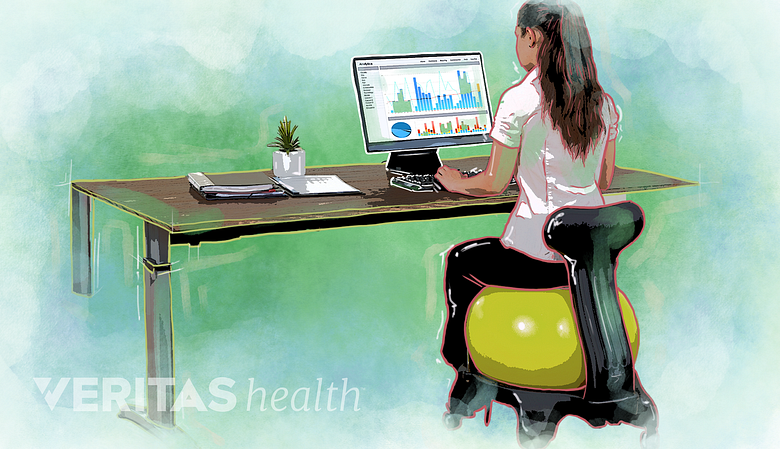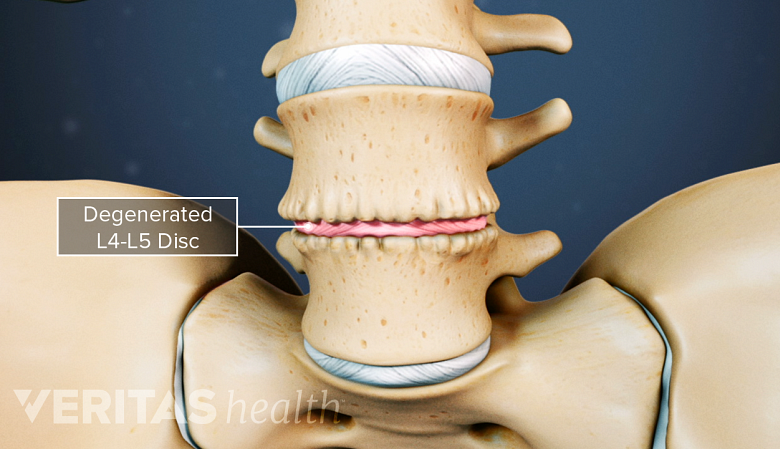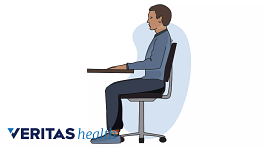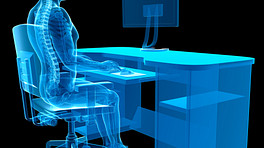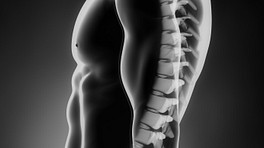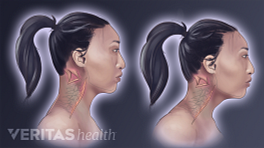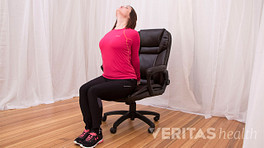As an alternative to the more traditional office chair, new styles of ergonomic chairs have been designed to try to create good support, comfort, and promote good posture. These chairs may take a little getting used to, but typically become very comfortable over time. Use of these types of ergonomic chairs can be very beneficial for some people with lower back pain or discomfort.
In This Article:
- Choosing the Right Ergonomic Office Chair
- Ergonomic Chair Alternatives to Traditional Office Chairs
Kneeling Ergonomic Chair
The kneeling chair is an office chair that has no back, and places the user in a modified kneeling position. The design encourages good posture by sliding the hips forward and aligning the back, shoulders, and neck. Primary support is from the seat of the chair, with additional support coming from the shins. This type of ergonomic chair distributes the weight between the pelvis and the knees, which reduces spinal compression, and therefore reduces the stress and tension in the lower back and leg muscles. This ergonomic chair has a forward slanting seat that leads to a more natural position for the spine. The result is an office chair that makes sitting in the proper position feel comfortable and effortless.
Saddle Ergonomic Chair
The saddle chair is another ergonomic chair that can be used as a desk chair or computer chair. This type of office chair is in the shape of a horse's saddle and puts the user in a position somewhere between sitting and standing, similar to the position used when riding a horse. This allows the legs to drop naturally, and widen, creating a healthy and stable position. This position is often useful for patients with lower back problems. With long term use it can even strengthen the back muscles. These ergonomic chairs have an adjustable height to be appropriate for different users. The design is intended to eliminate some of the typical problems experienced with a traditional office chair such as circulation system problems and slouching forward.
Exercise Ball Ergonomic Chair
An exercise ball chair encourages movement and active sitting.
The exercise ball chair is another completely different type of ergonomic chair. As the name states, it is a ball, which is large enough to support the user in any long-term sitting usage, and works well as a desk chair or computer chair. The major advantage to this type of chair is that it encourages movement and active sitting. There is a slight bouncing involved that keeps the legs moving, which stimulates circulation and keeps muscles busy, reducing stress and fatigue. Sitting on the ball makes slouching difficult, and the positioning needed to stay on the ball will automatically improve posture. The ball comes in different sizes to find the appropriate height for individual users. Some of these chairs can be modified with a base frame with wheels for improved mobility, and can even have a backrest attached.
Recliner Chair
Reclining chairs with footrests provide relief from degenerative disc disease symptoms.
For some people, sitting in a reclined position is most comfortable for their backs. For example, people with pain from lumbar spinal stenosis or degenerative disc disease often will feel most comfortable in a reclined position with feet propped up on a footrest. For these people, one option may be to use a recliner while working. Small tables are available that attach to the reclining chair and can swivel over the chair to allow one to work comfortably on a laptop or do paperwork.
No matter what type of ergonomic chair or regular office chair is used, short breaks should be taken throughout the day to improve circulation. Getting up from the chair from time to time will encourage stronger posture, relieve strain on the eyes, and reduce fatigue.
